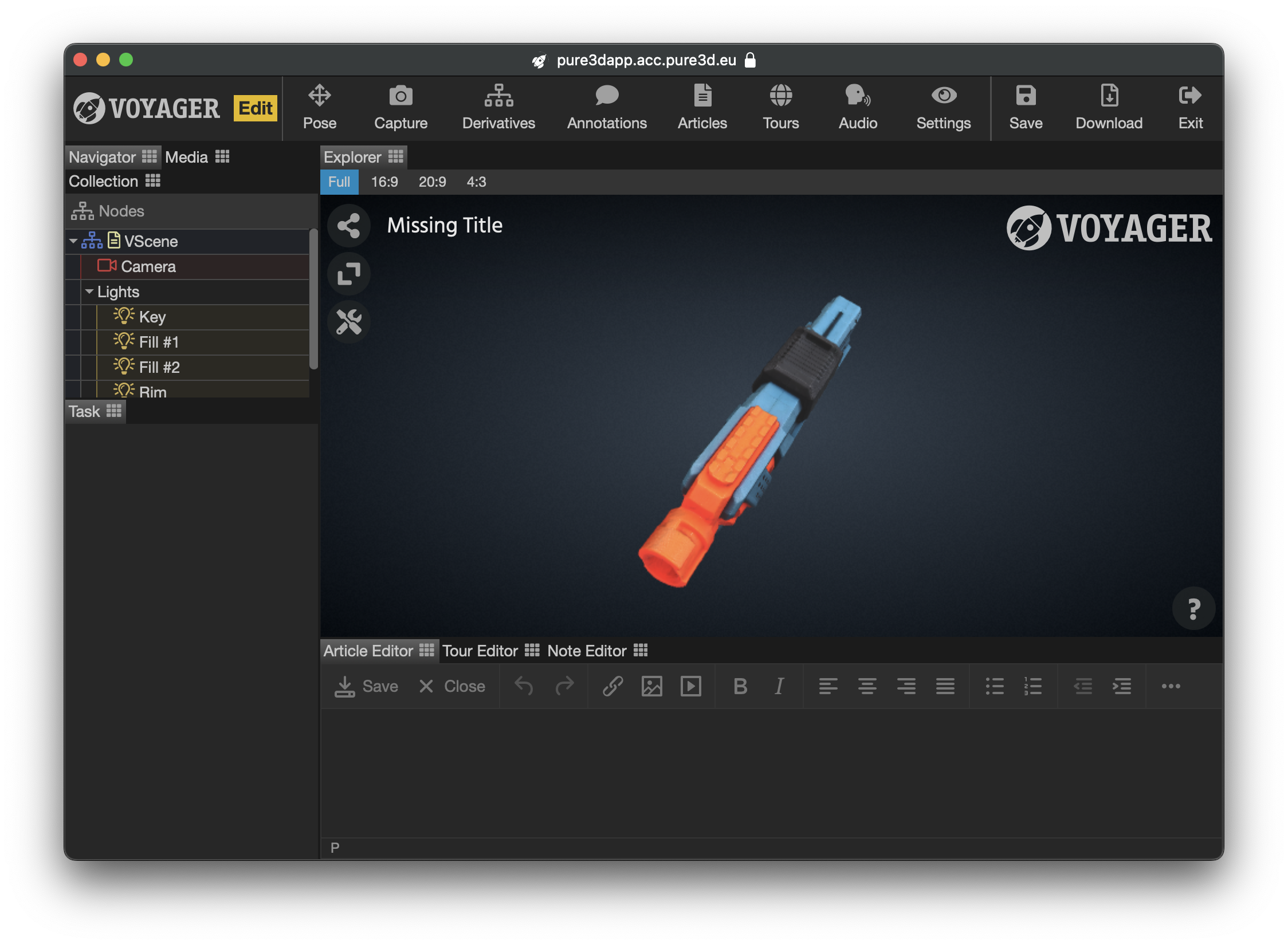
After creating the 3D model using Metashape Pro, we were ready to import our work into the Voyager 3D environment that you see right now. Developed by the Smithsonian, Voyager is an environment for displaying 3D models with a compelling scholarship edition around it. It was developed to display 3D models accompanied by rich data for museum collections and documenting heritage (Smithsonian, n.d.).

Voyager has many affordances that allow for a rich and multimodal presentation. This way, the readers are able to feel closer to the toy and interact with it on a deeper level, compared to having a 3D model alone in other programs such as Sketchfab. The capability of Voyager allows for multimodal presentation of various forms of media into a coherent form (Van Leeuwen, 2015).
The multimodal assets are also extending the way that users can interact with the object. In our edition, we have made use of an audio guide upon launching of the Edition as well as audio snippets of the sounds created by the toy. We also included additional images that help visualise the possibilities of the toy, as well as additional embedded 3D models and videos.
To present those assets, and to craft a coherent narrative around them, we made use of the different affordances offered by Voyager. Firstly, we created a number of annotations. You can see them directly on the 3D model. They allow users themselves to navigate around the toy and use the annotations as leads for an additional context. Through annotations, users can also discover articles that expand on the elements of the toy and provide interesting insights. On top of that, guided tours provide for a more comprehensive introduction into the specific themes, with a sequence of curated articles that compliment the 3D model. Voyager provides a lot of flexibility as the users can discover the toy in their own way and order.